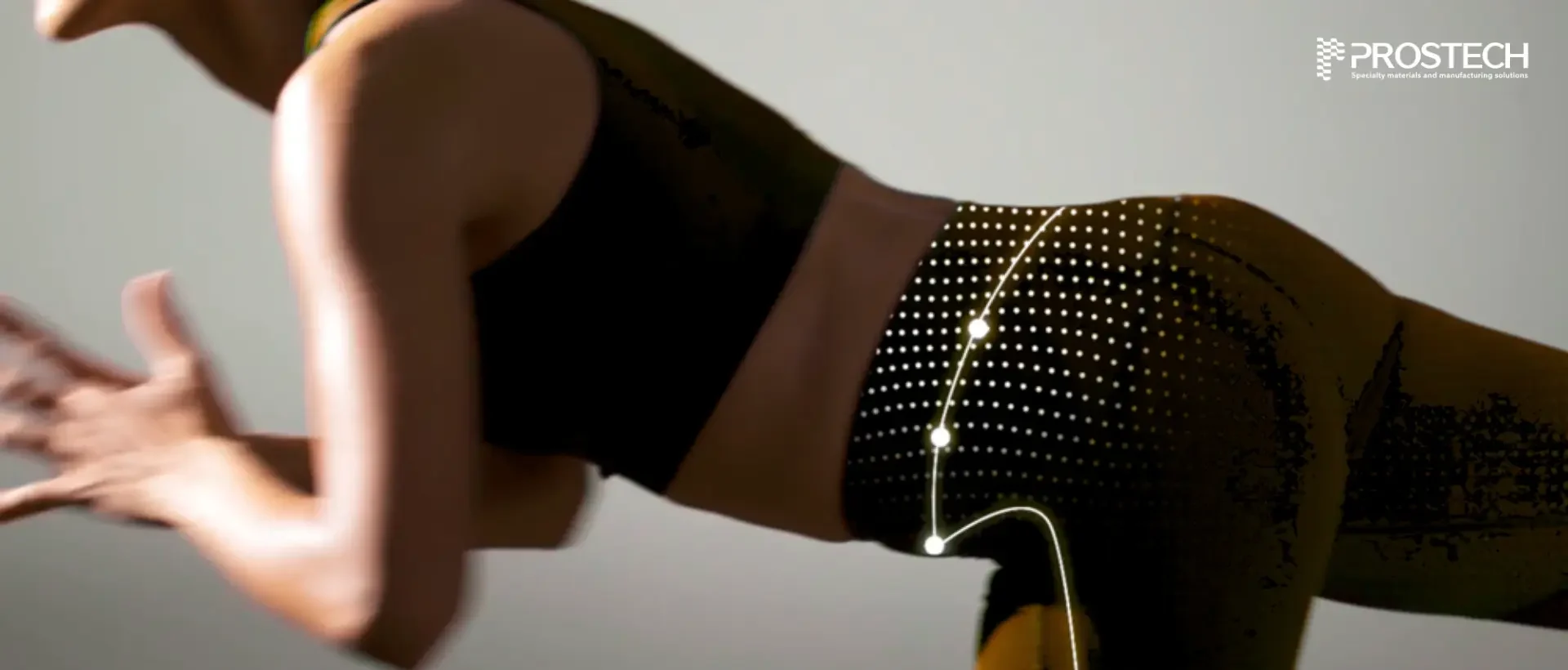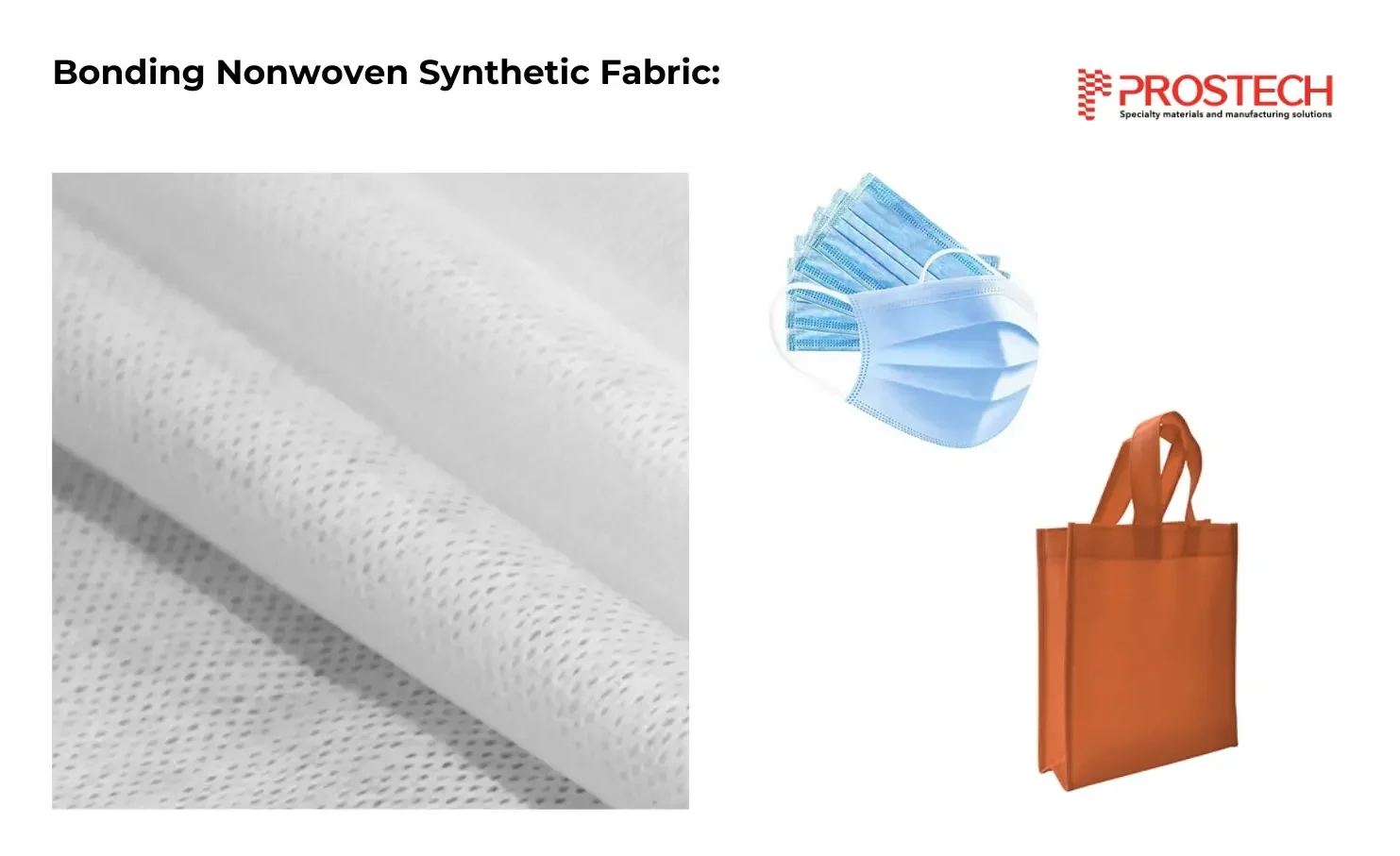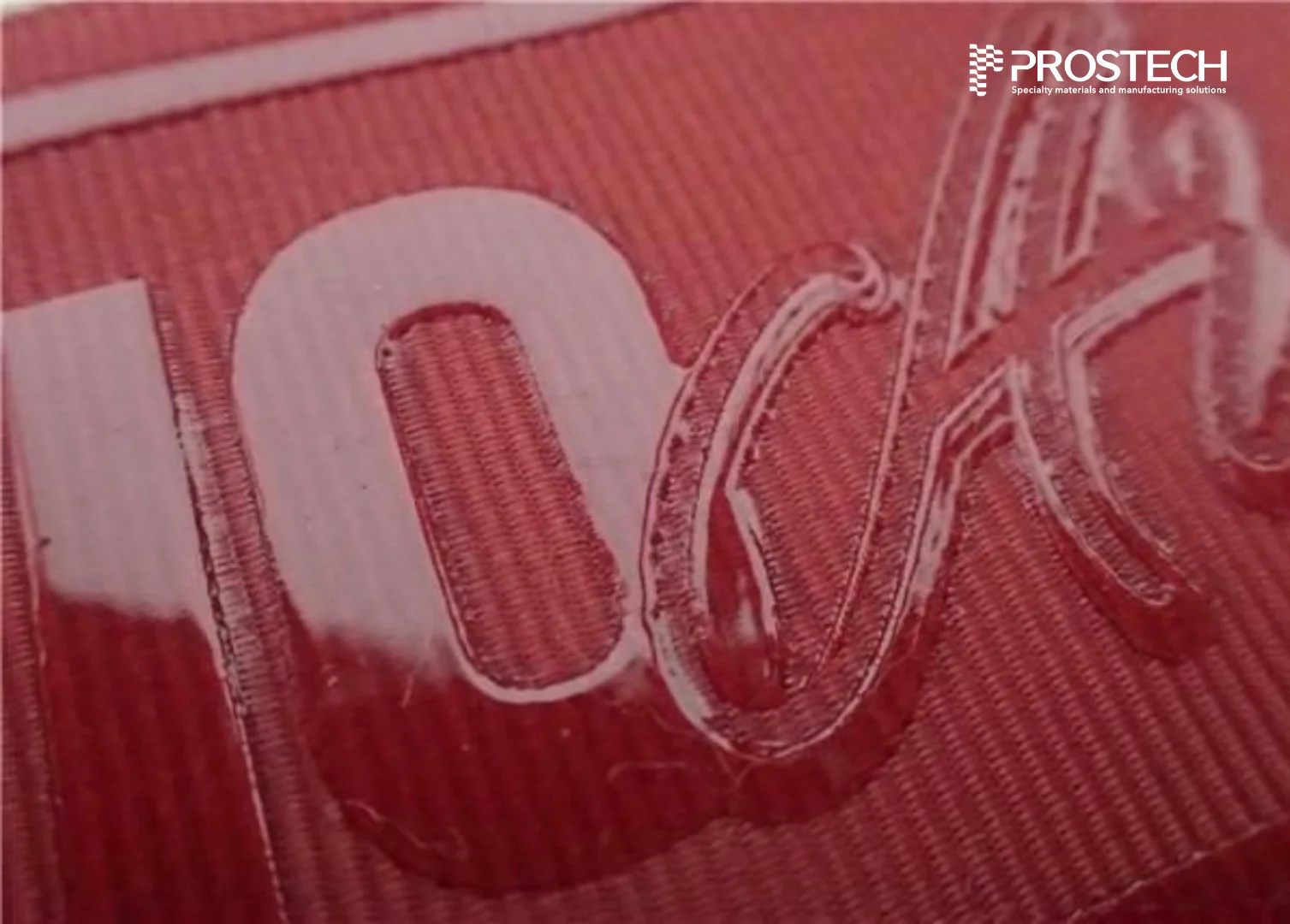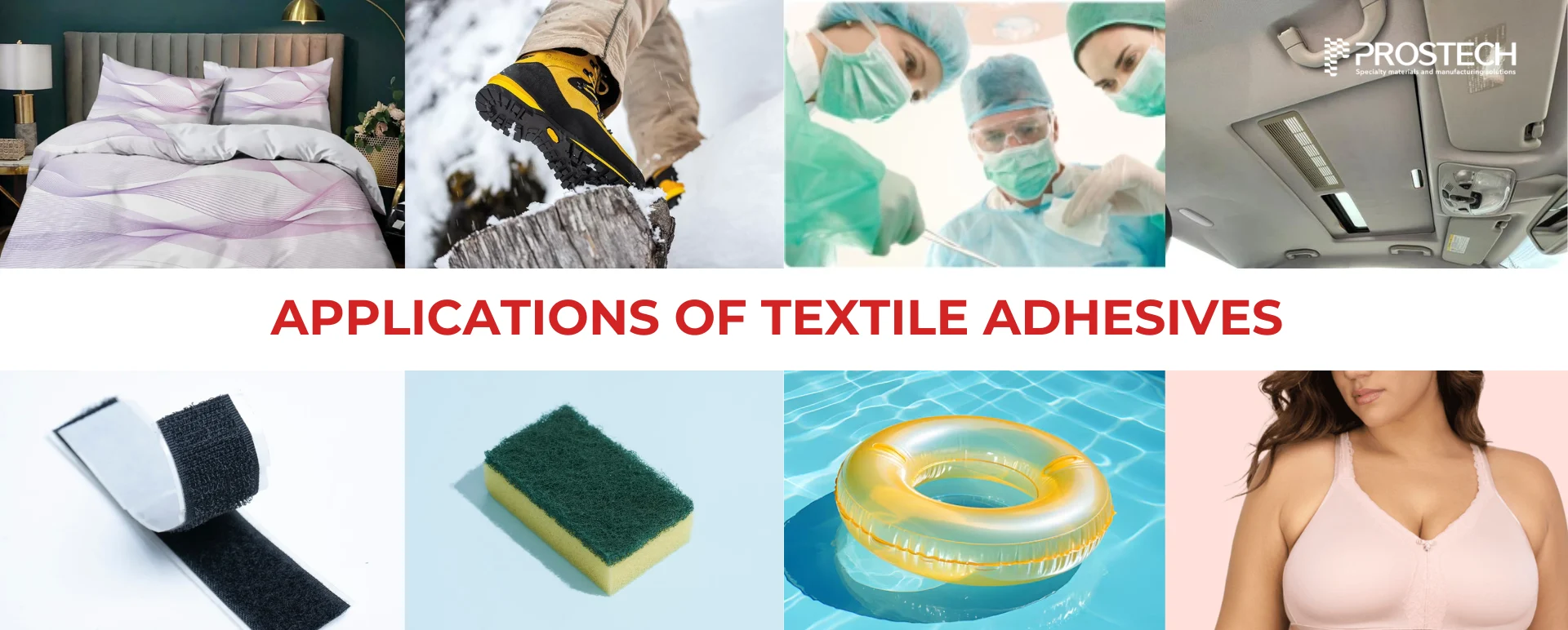
The use of adhesives in the textile industry is becoming increasingly popular due to their superior performance and aesthetic benefits. Adhesives not only help ensure durability and flexibility but also enhance comfort in products such as clothing, underwear, medical fabrics and many more.
However, when applying adhesives, manufacturers often encounter a number of problems including the adhesive not sticking firmly, damaging the fabric, or reducing the durability of the product. The reason is that each type of adhesive has its own characteristics and applications, suitable for the specific needs of each product. Therefore, choosing the right adhesive is extremely important.
In this article, Prostech will introduce some popular types of adhesive, the applications of each type of adhesive in the textile industry and how to choose the most effective type of glue.
Types of Textile Adhesives

1. Hot Melt PUR
PUR is a hot melt adhesive that hardens when exposed to moisture. It is commonly used in applications that require water resistance and high strength.
Characteristics of hot melt PUR
- Fast drying time
- Soft and good adhesion on many fabrics, suitable for durable water repellent (DWR) fabrics.
- Low application temperature
- Good breathability
- Solvent-free and environmentally safe, competitive price.
Applications of hot melt PUR
Hot melt adhesives are widely used in rapid manufacturing processes that require strong adhesion. They are commonly used in applications such as:
- Multilayer Fabric Lamination
- Non-woven Fabric, Garment Fabric.
- Sew Free Sewing
- Medical Products, Automotive, Disposables.

2. PVA (Polyvinyl Acetate) fabric glue
PVA adhesive is a type of adhesive made from polyvinyl acetate resin, which is an effective and convenient adhesive solution for many applications in the textile and craft industries.
Characteristics of PVA fabric glue
- Easy to use and clean
- Good adhesion on many surfaces
- Non-toxic and safe for users
Applications of PVA fabric glue
PVA adhesives are among the most popular choice in the textile industry due to their safety and ease of use. They are typically used in products that require medium to high adhesion:
- Bonding of non-woven products made of synthetic fibers (e.g. bags, medical masks, finished textile products)
- Garment products, interior decoration
- Gluing of decorative details
- Clothing repair

3. Polyurethane (PU) fabric adhesive
With high adhesion, PU glue creates strong and durable bonds on a variety of materials, including durable water repellent (DWR) fabrics.
Characteristics of PU fabric adhesive:
- High mechanical and chemical resistance.
- Resistant to water and harsh weather conditions.
- Strong adhesion and flexibility.
Applications of PU fabric adhesive:
PU adhesives are preferred in applications requiring high durability and resistance to harsh environmental conditions. They are particularly effective in bonding:
- Technical fabrics, waterproof fabrics.
- Outdoor products such as tents, tarpaulins, and protective gear.

4. Silicon fabric adhesive
Silicone adhesive is a type of adhesive made from silicon compounds. Silicone glue is usually in liquid or gel form, easily applied to the surface to be bonded and when dry will create a strong and flexible bond.
Features of silicone fabric glue:
- Good heat and weather resistance.
- Flexible and elastic adhesion.
- Easy to color
- Safe and non-irritating to the skin.
Applications of silicone fabric glue:
Silicone adhesives are the first choice for applications that require flexibility and heat resistance:
- Medical products
- Used to coat fabrics, improving the durability and aesthetics of textile products.
- Used to make labels on textile products.
- Used in the printing process on fabrics.

See silicone adhesive products
Criteria for choosing the right textile adhesives
When selecting adhesives for textile products, manufacturers need to consider the following factors to ensure optimal performance:
- Fabric type to be bonded:
Make sure the adhesive is suitable for the type of fabric you are using, for example Cotton, Polyester, Polyamide (Nylon), Spandex, PU foams (Aromatic or Aliphatic PU Foam) or other synthetic fibers.
- Technical characteristics of fabric glue:
- Viscosity: Adjust according to thickness requirements and application method.
- Working time: Choose an adhesive with an open time long enough to allow processing steps to be performed without the problem of the adhesive drying too quickly.
- Drying and curing time: Make sure that the drying and curing time of the adhesive is appropriate for production speed and process requirements.
- Adhesion: The adhesive should be able to adhere well between different layers of fabric.
- Flexibility: Choose an adhesive with good elasticity if the product will be subjected to tensile or stretching forces. For example, lingerie may require a softer adhesive than a jacket.
- Heat and water resistance: For textile products, the adhesive should be able to withstand temperature and not be affected by water.
- Safe for users: Choose adhesives that are free of toxic chemicals and safe for people to come into contact with (Adhesive products may need to be certified by Oeko-Tex to ensure that they meet safety standards and do not contain harmful substances)
- Specific applications
Depending on the type of product (shirts, bags, underwear, etc.) you can consider the specific requirements and choose the appropriate adhesive.

For example, PVA adhesive is often used when bonding nonwoven products made from synthetic fibers such as medical masks.
- Ease of application
- Adhesive application method: The adhesive should be compatible with the application method used in the manufacturing process, such as spraying, rolling, or dotting.
- Compatibility with the fabric surface: The adhesive should be easily distributed evenly on the fabric surface without causing problems such as air bubbles or settling.
- Compatible with the following treatment steps
- Heat Treatment: If the product requires heat treatment after bonding, choose an adhesive that is heat resistant or unaffected by heat treatments.
- Chemical Treatment: If chemical treatment is required, ensure that the adhesive does not react with other chemicals.
- Cost and process efficiency:
- Cost of Use: Evaluate the cost of the adhesive in the context of the overall manufacturing process.
Process Efficiency: Ensure the adhesive does not add to production time or require unnecessary processing steps.
Thus, choosing the right adhesive for fabric is not easy. Above are some criteria that manufacturers can refer to in order to choose the most suitable adhesive for their textile production process. If you need support, please contact Prostech to receive free professional consultation and product testing! We are always ready to provide optimal adhesive solutions for all our customers’ needs in the textile industry.
The best adhesive for textile manufacturing
Looking for the best fabric glue? Here are some options Prostech suggests to help you choose the fabric adhesive that best suits your needs:
- H.B.Fuller TL2109: designed to bond fabric to fabric.
- H.B.Fuller TL5404D: designed to bond fabric layers with HDWR or TPU film (High Water Repellency) material.
- H.B.Fuller TL5408D: designed to bond fabric to breathable membranes.
- H.B.Fuller TL2113: has very high durability, good adhesion, low density, used for fabric lamination.
- H.B.Fuller TL5328SY: has high bonding strength, long open time, good adhesion to waterproof fabric, anti-yellowing.
See all products for textile & garment
Prostech offers a wide range of high-quality fabric adhesives, designed to meet different requirements from strong adhesion to heat resistance and water resistance. Choosing the right adhesive will not only increase product quality but also improve production efficiency. With many years of experience in the field of adhesives for the textile industry, Prostech is ready to support customers in choosing the right adhesive and provide integrated solutions into the production line to optimize production efficiency. Contact us for a free consultation.







